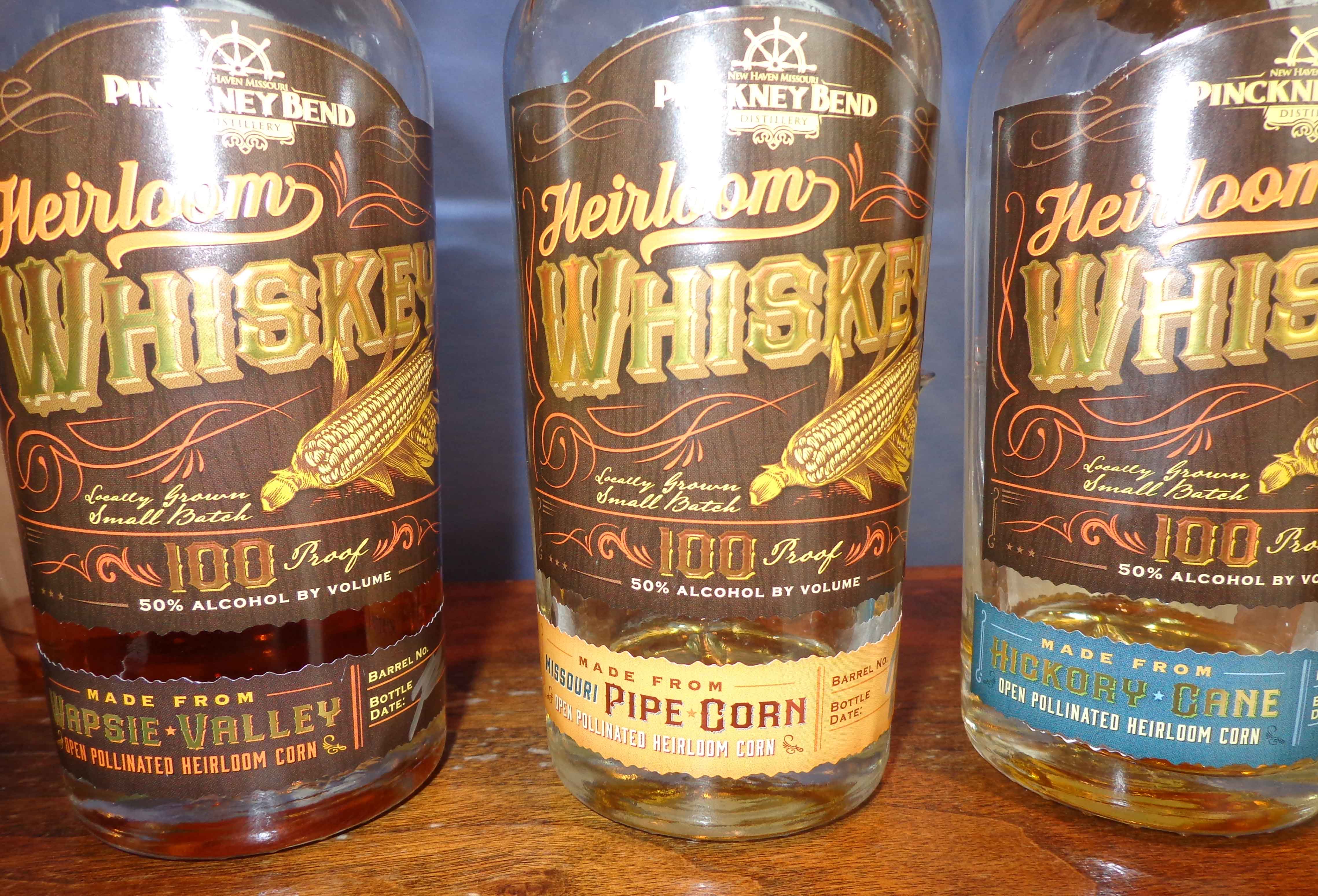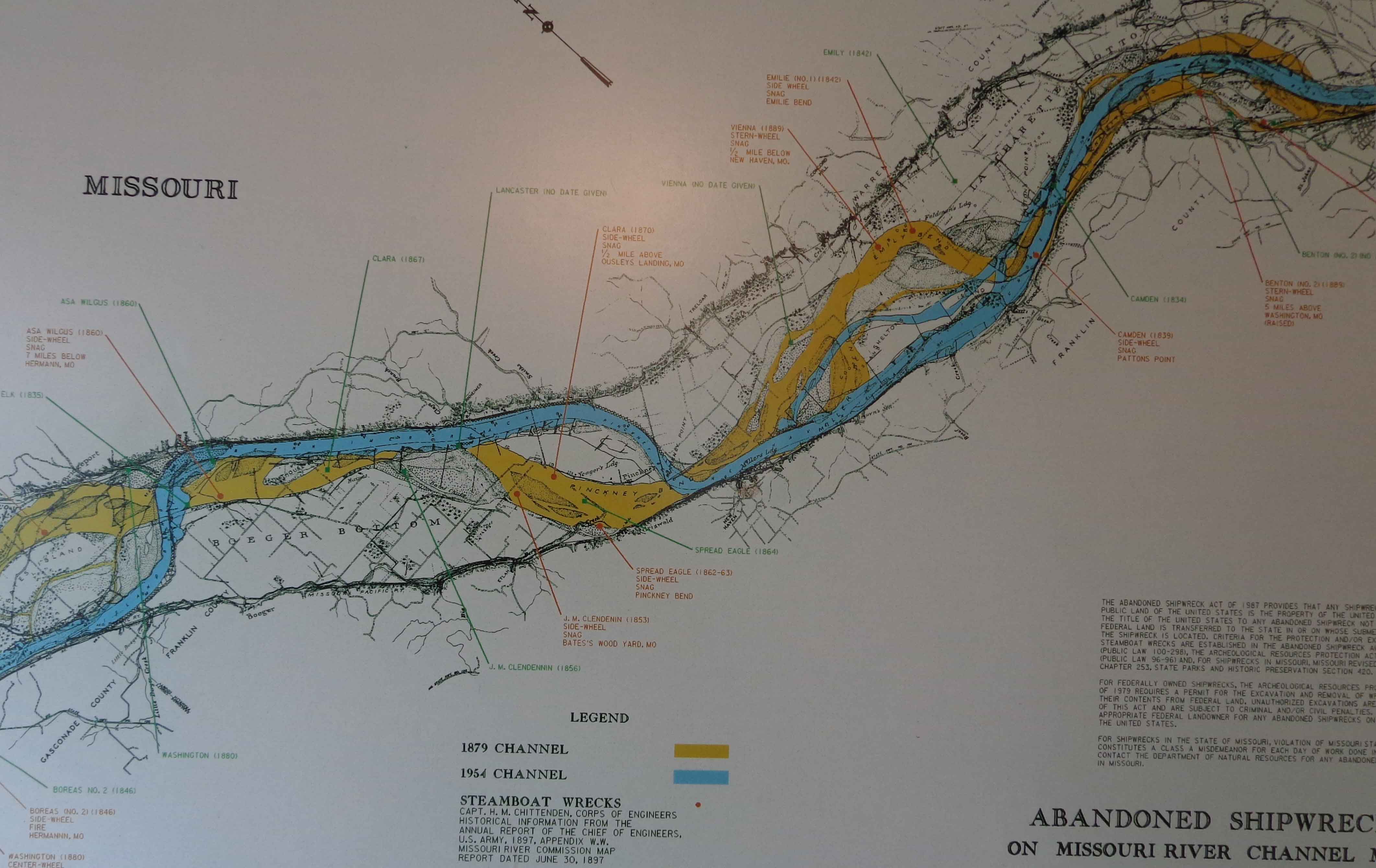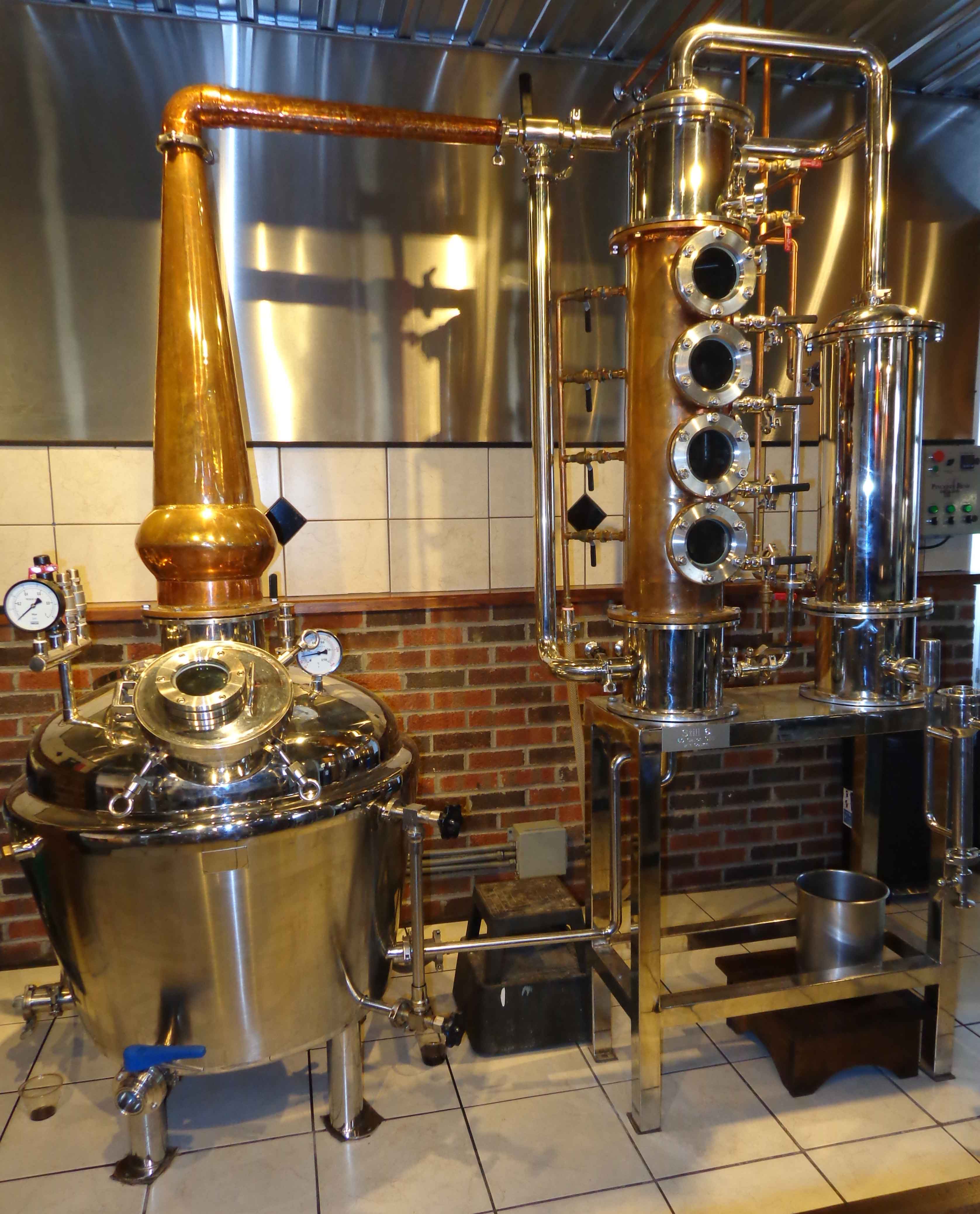
Almost exactly a year ago, I posted about having heard from a distiller in New Haven, Missouri. Ralph Haynes of Pinckney Bend Distillery had left an enthusiastic review on Amazon of my book, Midwest Maize, and had then contacted me about my book having encouraged him and his partners in their pursuit of whiskeys made from heirloom corn, which are recreating the tastes of the 1800s. (Three bottles of this heirloom corn are shown above, with the type of corn identified on the bottom label. The Wapsie Valley was my favorite.) At the time, he suggested I come down to New Haven, to check out the whiskey and to enjoy some of the very picturesque area—and maybe even do a presentation about corn.

Last year, it seemed unlikely that I’d get there, but when a conference appeared on my calendar that was taking me about that far south, though a bit to the east (Louisville, KY, to be exact – more on this on my The World’s Fare blog), I thought I might come home by way of Missouri. Ralph’s wife, who managed the local library district, arranged for the offered presentation opportunity, so I got to do my “How Corn Changed Itself and Then Changed Everything Else” talk for a most appreciative local crowd.
The distillery is just a few yards from the Missouri River, at the end of a street of historic buildings and just off the Lewis and Clark Trail. So I was delighted with the location, even without having a distillery close at hand. And within the distillery, in addition to gleaming stills and colorful heirloom corn varieties, there were maps and tales of the meandering Missouri River and steamboats that were sunk by the river’s snags and bends. (In the photo below, the river feature called Pinckney Bend is in the center, and you can see that, even when the river changed its course, it still “bent” at this spot.)

There were also a lot of antiques related to corn growing and processing, including shellers and jabbers, which I talk about in my book, so I was really having fun. Plus the modern equipment is remarkably handsome. They have two stills, one slightly larger than the other. The one below is the smaller of the two stills.

Of course, I did get to try some of the elegant whiskeys produced by Pinckney Bend, as well as their gin, and I toured their facility. But Ralph had also planned a few other things for me to see, both with him and on my own. So it was a lovely few days of exploring—as you’ll see over the next few posts.











